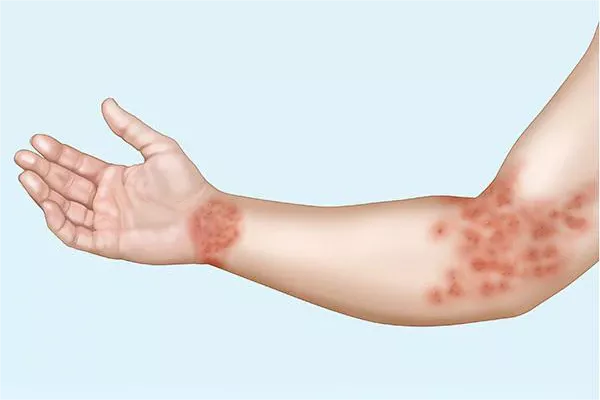Vitiligo is a chronic skin condition characterized by the loss of skin pigment, resulting in white patches. While there’s currently no cure, various creams and treatments can help manage the appearance of the skin and promote repigmentation. This guide will delve into the best creams available, their ingredients, and how to use them effectively.
Understanding Vitiligo
Vitiligo occurs when melanocytes, the cells that produce melanin, are destroyed or cease to function. This can result from autoimmune responses, genetic factors, or environmental triggers. Understanding this background is crucial as it sets the stage for treatment options. While vitiligo can affect any part of the body, common areas include the face, hands, and around body openings.
Types of Creams for Vitiligo
Different types of creams target various aspects of vitiligo treatment. Here’s a breakdown:
A. Topical Corticosteroids
These creams reduce inflammation and can help restore skin color. They are usually the first line of treatment.
Hydrocortisone Cream (1%): This is a mild corticosteroid often used for early-stage vitiligo. It is safe for sensitive areas, such as the face and genitals, and is typically applied twice daily.
Clobetasol Propionate (0.05%): A more potent corticosteroid, suitable for extensive areas of depigmentation. It’s effective but should be used under the supervision of a dermatologist due to possible side effects, including skin thinning.
SEE ALSO: The 7 Best Vitiligo Cover Cream
B. Calcineurin Inhibitors
These non-steroidal creams are effective in sensitive skin areas and are particularly useful for facial vitiligo.
Tacrolimus Ointment (0.1%): Often prescribed for facial vitiligo, it works by inhibiting T-cell activation and may stimulate melanocyte activity. Applied twice daily, it can cause mild burning initially.
Pimecrolimus Cream (1%): This is less potent than tacrolimus and is generally used for sensitive areas, including the face. It also helps in repigmentation and is suitable for long-term use.
C. Depigmenting Agents
For individuals with widespread vitiligo, these agents can help to lighten remaining pigmented skin, ensuring a more uniform appearance.
Monobenzone Cream (20%): This is a prescription cream that lightens the remaining areas of pigment. It works gradually and is usually applied once or twice a day. Monobenzone can permanently depigment the skin, so it should be used carefully and under medical supervision.
D. Moisturizers and Sunscreens
While these do not treat vitiligo directly, they are essential for maintaining skin health and preventing further damage.
CeraVe Moisturizing Cream: This cream contains ceramides and hyaluronic acid, which help restore the skin barrier and retain moisture. It’s ideal for daily use to keep the skin hydrated.
Neutrogena Ultra Sheer Dry-Touch Sunscreen: Protecting depigmented areas from sun exposure is critical, as they are more susceptible to sunburn. This sunscreen offers broad-spectrum protection and is lightweight, making it suitable for daily wear.
Active Ingredients to Look For
When selecting a vitiligo cream, consider the following key ingredients:
Tretinoin: A derivative of vitamin A, tretinoin promotes cell turnover and enhances the absorption of other treatments. It can be used in combination with corticosteroids for better results.
Vitamin D3 Analogues (e.g., Calcitriol): These can stimulate melanocyte activity, making them useful adjuncts in vitiligo treatment.
Niacinamide: Known for its anti-inflammatory properties, niacinamide can help improve skin texture and hydration, making it beneficial for overall skin health.
Application Tips
To maximize the effectiveness of vitiligo creams, follow these guidelines:
Patch Test: Always perform a patch test on a small skin area to check for allergies or irritation before full application.
Clean Skin: Apply creams to clean, dry skin. This practice enhances absorption and effectiveness.
Consistency is Key: Use the products as directed by your healthcare provider. Consistent application can lead to better results over time.
Lifestyle Considerations
In addition to topical treatments, certain lifestyle changes can support skin health:
Healthy Diet: A diet rich in antioxidants (fruits, vegetables, nuts) can support overall skin health. Foods high in vitamins C, E, and A are particularly beneficial.
Sun Protection: Use a broad-spectrum sunscreen with an SPF of at least 30 to protect vulnerable areas. Sun exposure can exacerbate skin issues and lead to sunburn.
Stress Management: Stress can worsen skin conditions, including vitiligo. Incorporating stress-reducing activities like yoga, meditation, or deep-breathing exercises can be beneficial.
Consulting a Dermatologist
Before starting any treatment regimen, consulting a dermatologist is crucial. They can assess the severity of your vitiligo and recommend the most suitable creams and treatments tailored to your skin type. Regular follow-ups allow for monitoring progress and adjusting treatments as necessary.
Conclusion
Finding the best cream for vitiligo involves understanding the different options available, their active ingredients, and how they fit into your overall skincare routine. Topical corticosteroids, calcineurin inhibitors, and moisturizers can significantly help manage this condition. Always consult with a healthcare provider to determine the best approach for your needs. While vitiligo presents challenges, effective management strategies can improve your skin’s appearance and overall health.
By being proactive and informed, individuals with vitiligo can embrace their skin and feel more confident in their appearance.
Related topics:


























